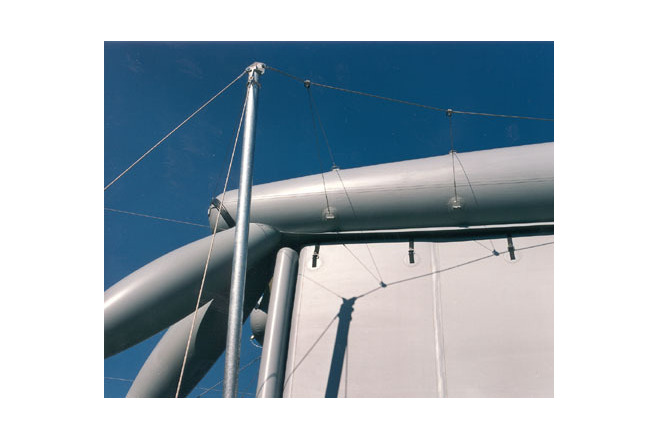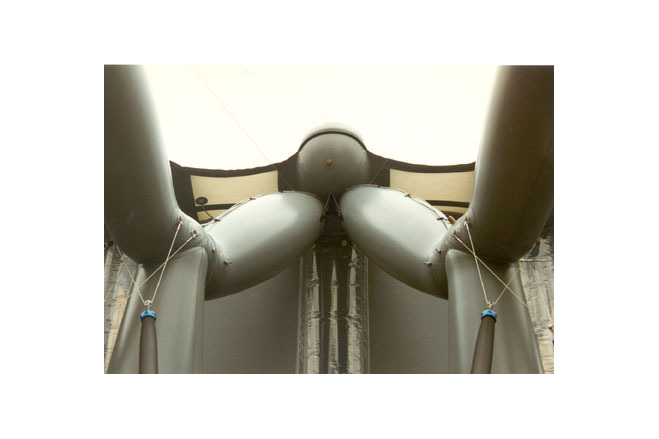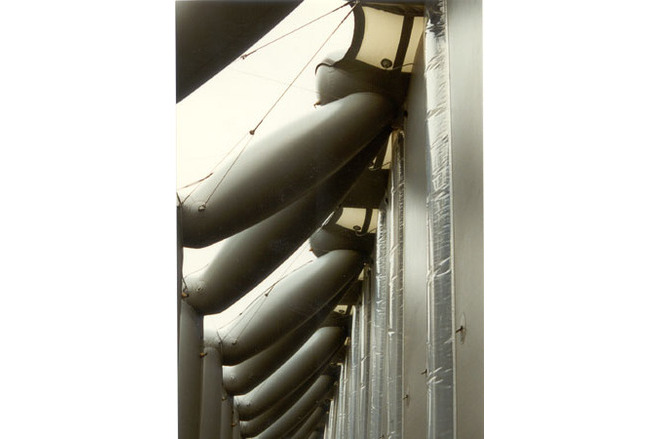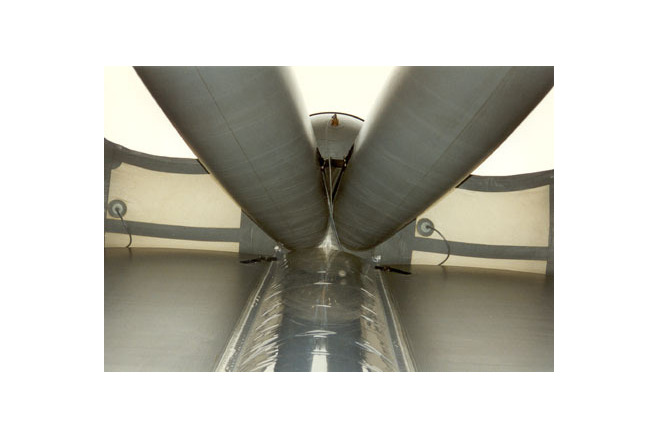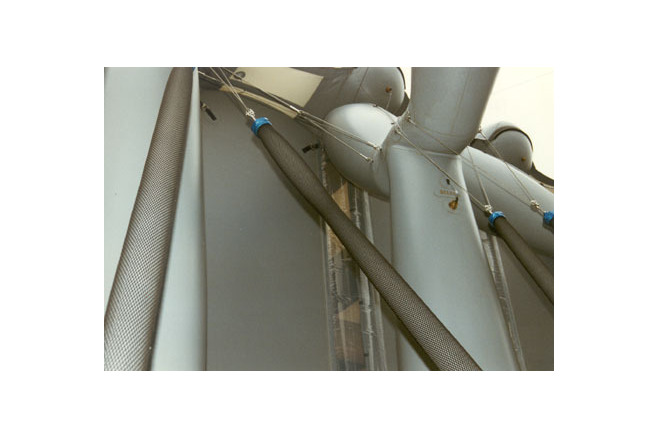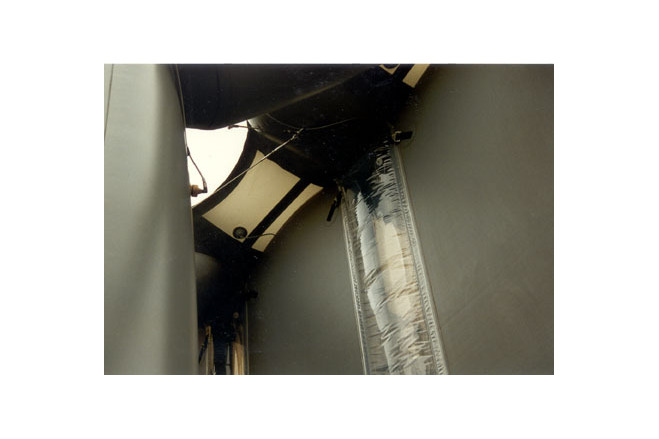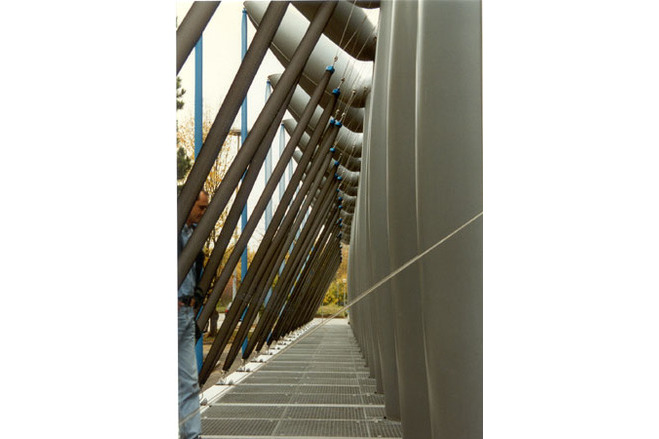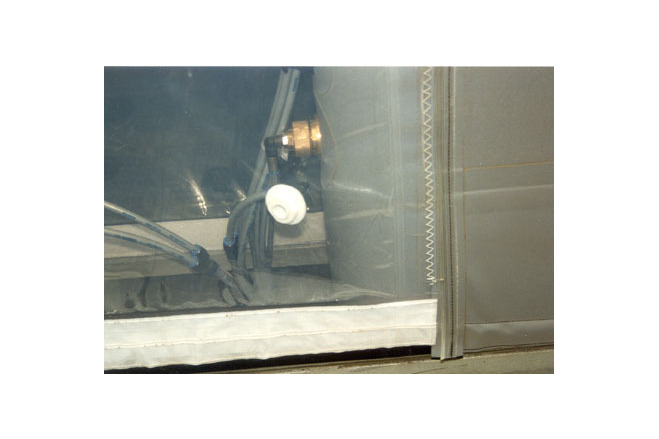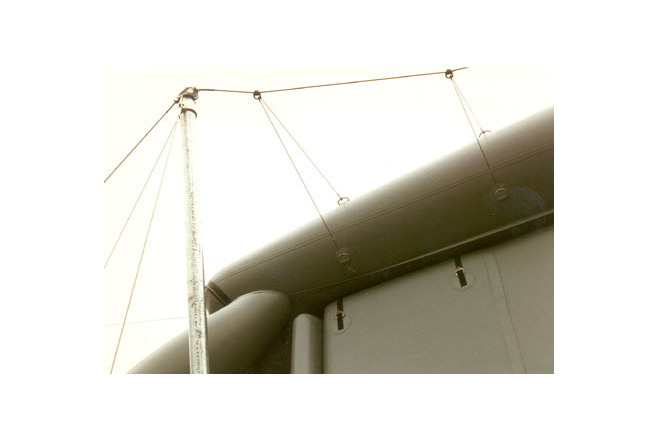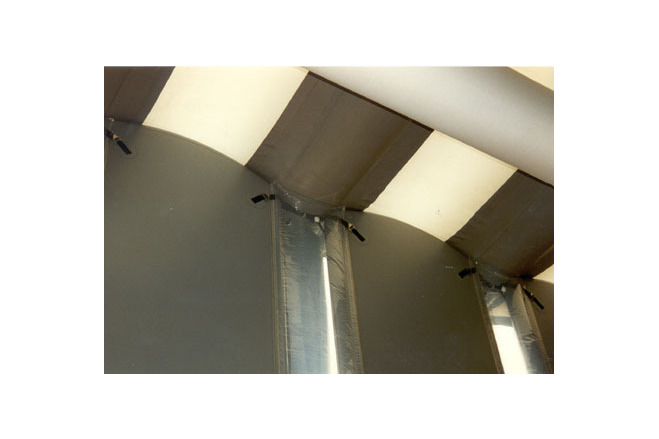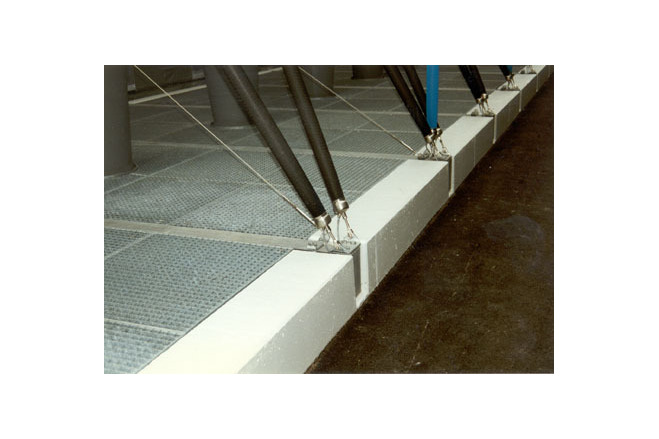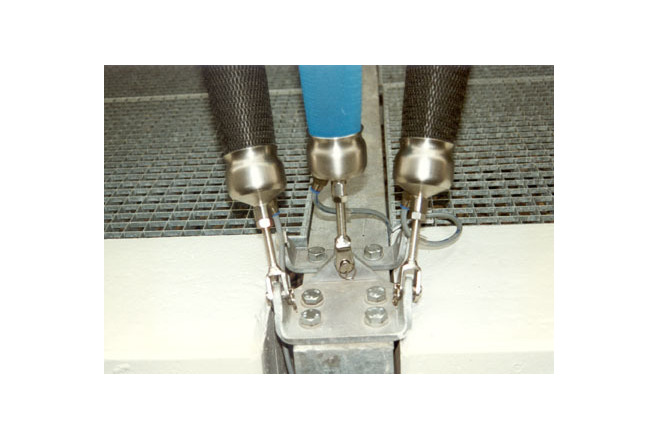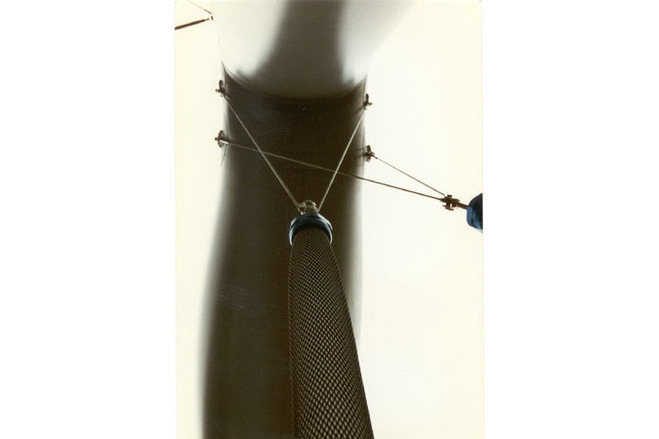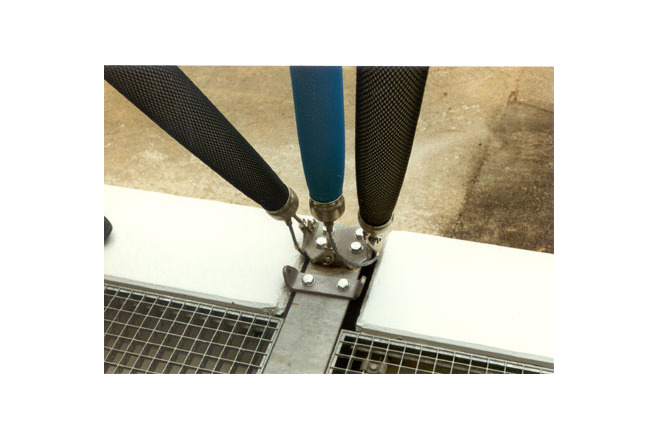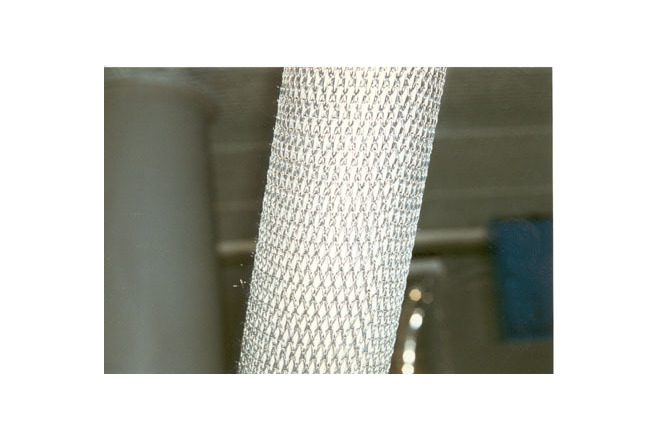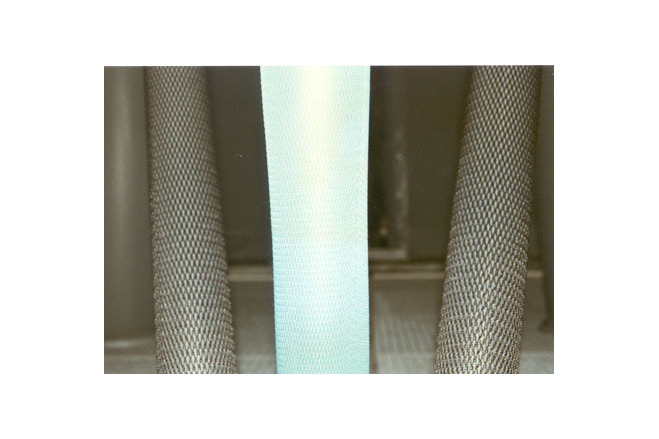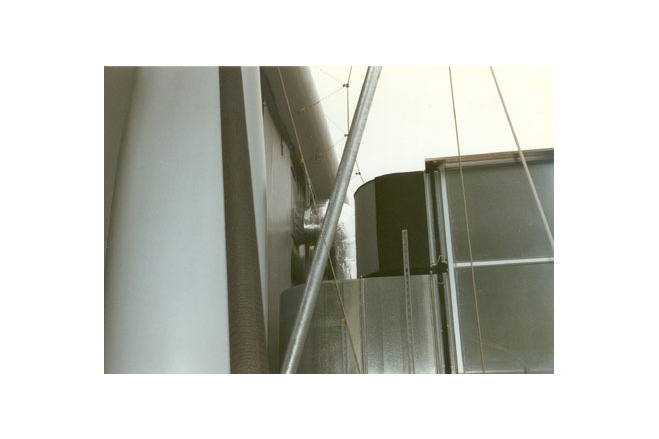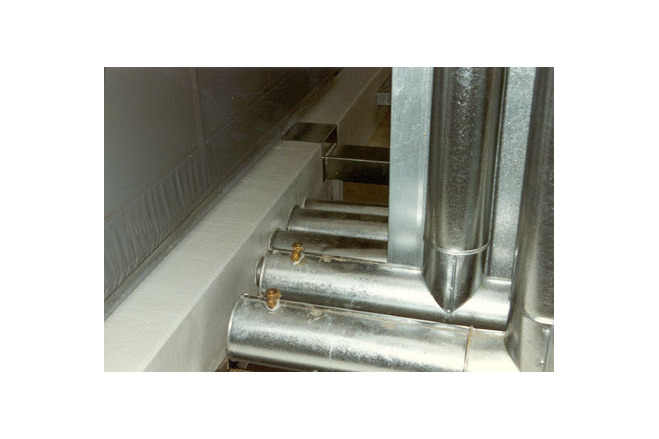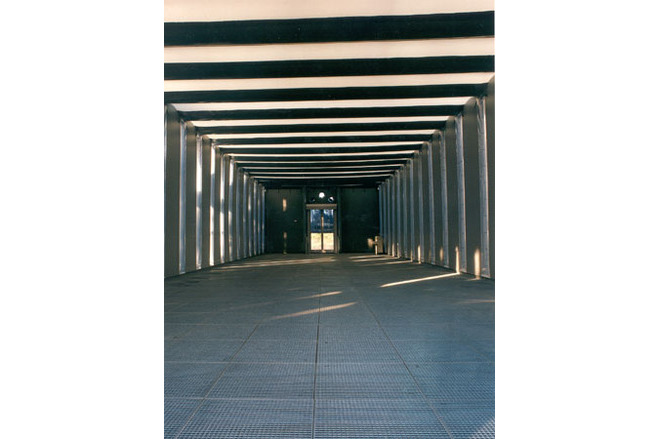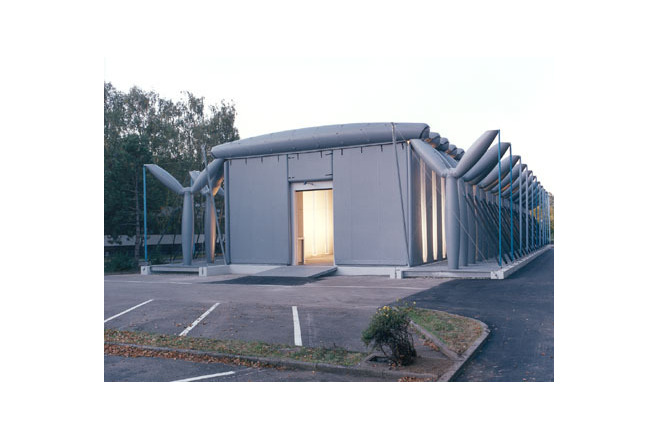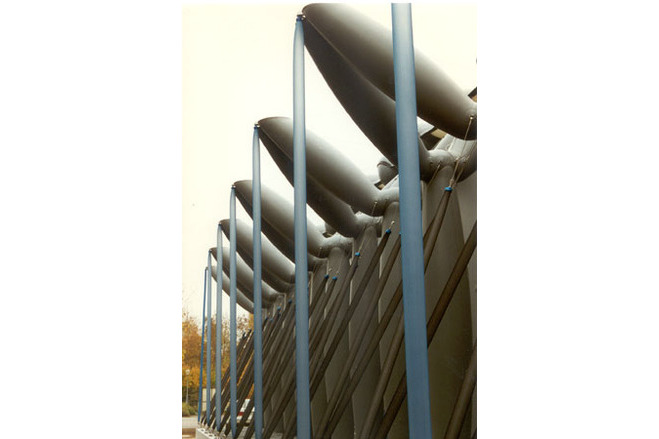Airtecture Exhibition Hall
General information
-
Location address
Esslingen
-
Location country
Germany
-
Year of construction
1996
-
Name of the client/building owner
Festo KG, Esslingen
-
Function of building
Exhibition
-
Degree of enclosure
Fully enclosed structure
-
Climatic zone
Temperate - cold winters and mild summers
-
Number of layers
mono-layer
-
Type of application of the membrane
covering
Description
Design With this test structure of an exhibition hall the company Festo, an internationally active company in pneumatic components, presents presumably the very first air-supported building with a cubic interior and with a supporting structure consisting primarily of air-inflated elements. The appearance of the new structure deliberately creates a new image and design, different in construction and appearance from existing air halls. Its design also reflects the advanced technological background and purpose of the hall; in its colour scheme grey is predominant, with accents of the company's colour blue and metallic aluminium, which creates a cool and friendly image in line with the company's range of colours.Situation, dimensionsInside the hall has a floor area of 375m² and a height of 6m, resulting in a total volume of 2250m³. The covered exterior dimensions are 800m², with an external height of 7,2 m. With a total dead weight of 7,5 kg/m² the structure is considered to be light. The hall was erected on the company ground; other applications are intended.The two end walls of the hall consist each of two L-shaped elements, leaving a free space between them measuring 3m x 6m. These two wall openings are used as entrances and above one of them the ducts for supply and exhaust air enter the hall. A 4m high, transparent PVC membrane serving as a roll-up gate is connected to a steel frame independent of the air structure.StructureThe hall consists of approximately 330 individual air-inflated elements, most of which come under the six categories of wall components, transparent window cushions, Y-shaped columns, roof beams with translucent, intermediate membranes and pneumatic tension elements (so-called 'muscles'). They all have different volumes and internal pressures.The load-bearing structure of the exhibition hall includes 40 Y-shaped columns and 36 wall components with parallel faces along both longitudinal sides. 72000 distance threads per square meter hold the double-layer walls in place at an operating pressure of 0,5 bar. The slits between the opaque wall components are filled with transparent cushions made of Hostaflon ET as window elements; slide locks allow easily installation.The load-bearing structure has many new features. These include among others the use of double-wall-fabric as a load-bearing element, flame-inhibiting elastomer coatings, a new translucent Levaprene coating (EVA = ethylene-vinyl acetate coating), and at last but not least, computer-controlled pneumatic tension elements ('muscles') and the concept of a building actively responding to environmental forces. The building was designed for a snow load of 50 kg/m² and a simultaneous wind speed of 80 km/h.
Description of the environmental conditions
Roof structureThe horizontal air-inflated girders, so-called "airbeams", carry the roof loads. Their maximum diameter in the middle of the span is 1,25m tapering to 0,75 m at the supports. The airbeams are supported at the junction of the wall components and the Y-shaped columns along the sides of the hall and are connected with them by textile webbing. The airbeams are pretensioned by their internal pressure thus forming a stiff structure.Translucent membranes connect the upper and lower sides of the airbeams. These intermediate membranes are stabilised by a low pressure vacuum. The alternation of positive (500 mbar) and negative (2,5 mbar) pressure produce a stiff roof diaphragm.BracingThe columns, which in plan are arranged in saw-tooth-pattern, together with one pair of wall elements, form a triangulated structure carrying vertical loads, for example snow, with the main proportion being carried by the walls. Horizontal wind loads are carried by the space frame consisting of pneumatic tension elements called 'muscles', pneumatic columns and wall elements.The end girders on top of the end walls are braced laterally by stainless steel boundary cable, which carries the wind load in this area and transfers it via galvanised steel struts and two guy cables into the foundations. The edge cable also serves to resist horizontal forces from the low-pressure intermediate membranes. All cables are connected to vulcanised patches with D-rings and cable terminals.'Muscles'With increasing wind speed, the 'muscles', supplied by increased inflation pressure from the pressure management, react with increased tension. The computer-controlled pneumatic muscles consist of a special man made fabric with internal silicone hose; tensions can be controlled by varying their inflation pressure. The tensile forces of the outer fabric are in equilibrium with the air pressure on the internal hose membrane. The air pressure in the muscles can be varied between 0,3 and 1 bar thus regulating the axial force.FoundationsNarrow steel rails are connected to concrete strip foundations; their half-pipe shells support the wall elements. This provides a counterbalance against wind uplift forces. Grating is used as a floor inside the hall, supported on steel joists fixed to the foundations at 1 m centres and 50 cm above the gravel bed. To emphasise the lightness of the structure the Y-columns rest on steel I-beams. Grating is also used as flooring in the exterior.Pressure management, controlsA speciality of this lightweight structure is its unusual structural system and its stability to actively respond to wind and snow loads. Relevant environmental data are supplied by a weather station on the building.To control the inflation pressures, all air-inflated elements are grouped into 10 almost identical sections, each of which is controlled by a valve terminal through proportional valves. The actual pressure in the elements is monitored by sensors. If an excess pressure builds up in any one element, this can be vented by means of pressure relief valves. The pneumatic control elements for each section are housed on mounting plates, installed in the floor space between grating and gravel. All plates are connected to a ring pipe, encircling the hall foundations and feeding the valves. The air pipes are routed from there to the pneumatic elements, easily accessible through wall slits.As a high-level control system a programmable control unit is used to communicate with the individual terminal slaves (I.e. the local control units mentioned above, which are dependent on the main control unit) and with the weather station via a data cable (field bus). The system calculates the necessary pressure values in the individual air elements according to the actual climatic conditions.
General comments, links
Heating, ventilation, air conditioningIn addition to the natural ventilation through the two doors, an air conditioning system is provided. The conditioned air is distributed via 2 textile supply air-supply ducts, suspended from the ceiling. Gravel fill under the grating is used as heat storage; light -coloured Rhine gravel keeps infrared absorption to a minimum. Radiators in the air space between grating and gravel bed heat the hall in winter. In summer a cooling system is available to cool the hall. The double layer walls of the exhibition hall promise improved thermal insulation compared with conventional membranes.Transport, assemblyThe air-inflated chambers made from textile membranes can be folded into a container of about 14 m in length and may be hauled quickly and efficiently to another site due to its low total weight of 6 t.[Soft Shells, Hans-Joachim Schock, p102-105]
Temporäre Bauten
"Airtecture" Exhibition Hall
Pneumatic Hall 'Airtecture', Esslingen-Berkheim, Germany
Future Developments
Material of the cover
-
Cable-net/Fabric/Hybrid/Foil
Foil
-
Material Fabric/Foil
Polyester/polyamid
-
Material coating
Hypalon/levapren
Main dimensions and form
-
Covered surface (m2)
800
-
Total length (m)
19.5
-
Total width (m)
40
Duration of use
-
Temporary or permanent structure
Permanent
-
Convertible or mobile
Convertible and mobile
-
Design lifespan in years
00-05
Involved companies
-
Architects
Festo AG & Co
-
Contractors
-
Suppliers
ContiTech
Editor
-
Editor
Marijke M. Mollaert



